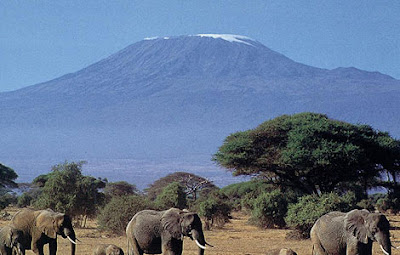
Photography is a hobby of mine and one that I really enjoy in the bush or on safari, but it is not the only reason that I am there and I am not a professional photographer.
Digital SLR Cameras for Safari PhotographyThe reason that I mention this is there is no doubt that digital SLR cameras are if you are looking for the best cameras for Safaris and pretty much everything else, the way to go. They do however have some downsides, especially when considering what is the best camera for travel and safaris. The biggest two are price and size:
1) Size Counts If you are on safari, that means that you are also travelling, that means unless it is your job, you probably don't want to take up all the space in your luggage with camera equipment. Digital SLR's, with a decent size telephoto lens (which you will need) are big, take up plenty of space and are pretty heavy pieces of kit.
2) The Price is RightAgain, for me and for many people who go on a safari holiday, photography is a hobby, you want to get some great pictures, but don't want to spend more on your camera than the holiday itself! If price is no option then a good quality digital SLR, with a nice big telephoto lens is the best, but it will be expensive.
So is there an alternative to the SLR camera?If the two drawbacks to getting an SLR camera for travel, safari and wildlife photography are something you don't want, is there another option? The answer is most certainly yes.
Digital Super-Zoom CamerasThe best Cameras for SafarisMost of the larger camera makers make a version of a super-zoom camera, basically halfway between a compact digital camera and an SLR camera. Whilst larger than a compact camera, they are much smaller and lighter than true SLR cameras. They also come with fantastic zoom capabilities, with 15x, 18x and even 20x lenses becoming common place. That is an SLR equivalent of a 520mm telephoto lens. Digital super-zooms also only cost a fraction of SLR cameras and you have the added advantage of not having to buy a separate telephoto lens.
I have almost always used some sort of digital super zoom camera and have, what I think taken some pretty respectable photos. For a few examples, take a look at some of my
African Bird and Wildlife photos, or some of my
Elephant Photos.
For me, a person who wants to take great photographs, but is on a budget, there is no choice, the best camera for Safari, Wildlife and Travel photography has to be some sort of Digital Super Zoom Camera.
Which SuperZoom to Get?Ok, so we have now decided not to get an SLR camera, but which super-zoom to get?
I have written a few articles on what I think is the the best Superzoom camera for travel & wildlife photography:
And if you want to give your superzoom camera even more power:
Telephoto Conversion Lenses for the Panasonic DMC-FZ28 & DMC-FZ18


 The most important piece of equipment that you can bring with you on safari is not your camera, but a good pair of binoculars. Remember you are not visiting a zoo and much of what you may be looking at will not be sitting right next to you and so to get the most out of your visit and to get closer to all the action you will need binoculars.
The most important piece of equipment that you can bring with you on safari is not your camera, but a good pair of binoculars. Remember you are not visiting a zoo and much of what you may be looking at will not be sitting right next to you and so to get the most out of your visit and to get closer to all the action you will need binoculars.